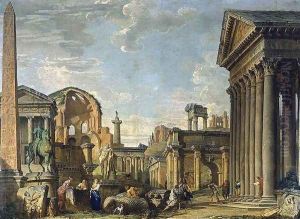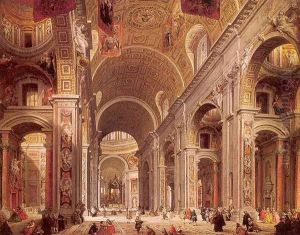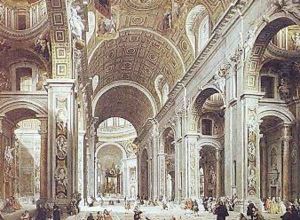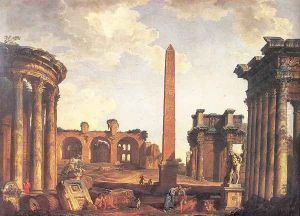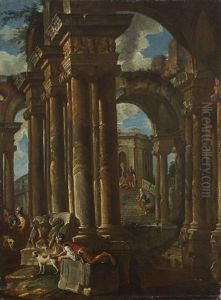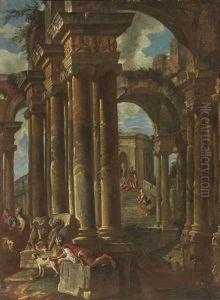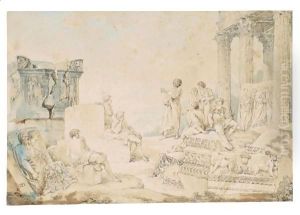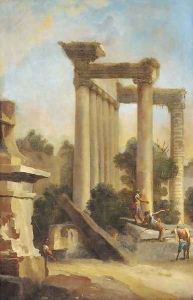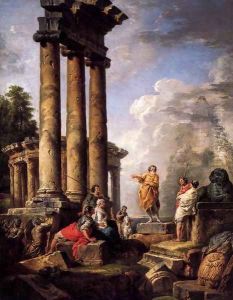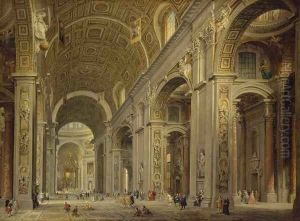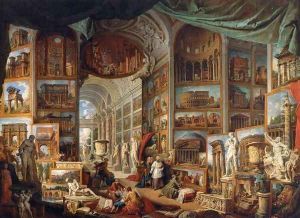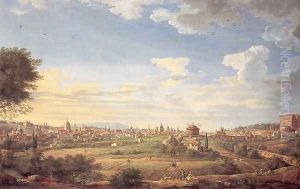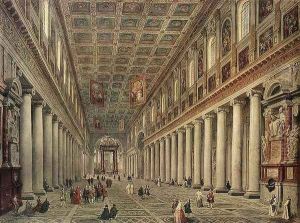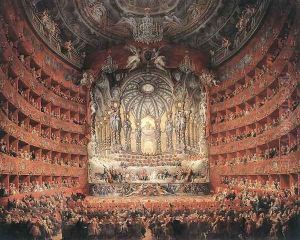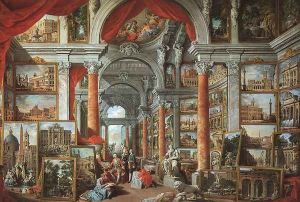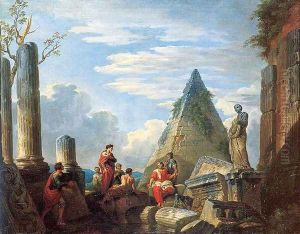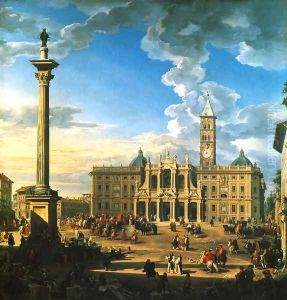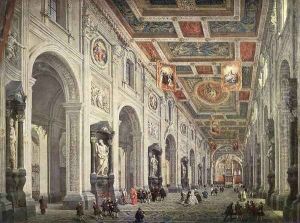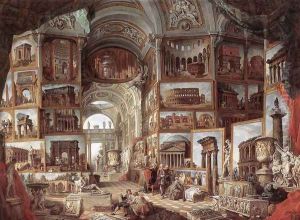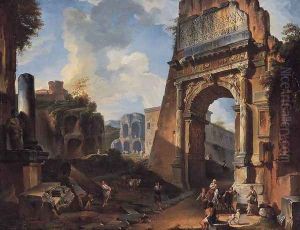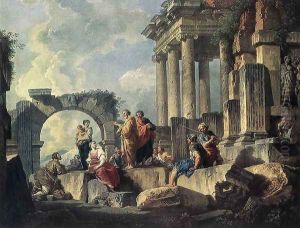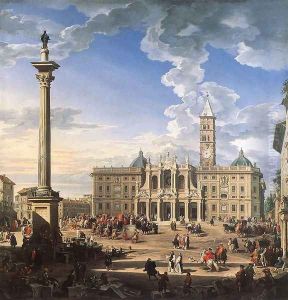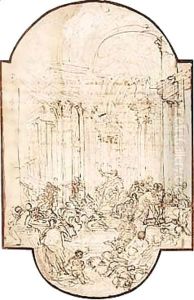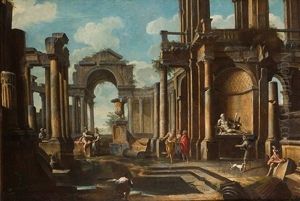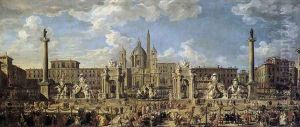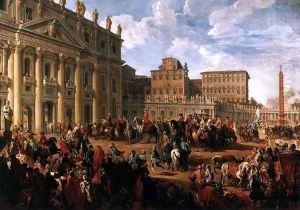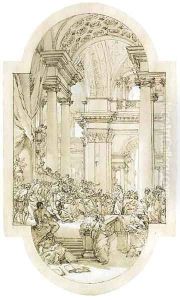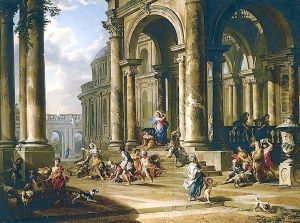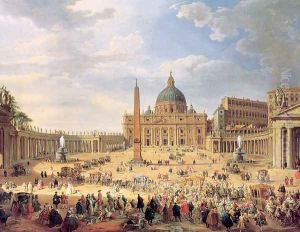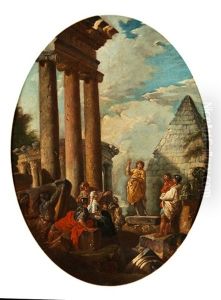Giovanni Paolo Pannini Paintings
Giovanni Paolo Pannini, born in Piacenza, Italy, in 1691, was a central figure in the world of Roman vedutismo (view painting) during the 18th century. His career was notably marked by his intricate and expansive depictions of Rome's architecture, ruins, and festivities, earning him a distinguished place among the vedutisti, artists specializing in vedute, or detailed urban landscapes. Pannini's early life in Piacenza laid the groundwork for his artistic inclinations, but it was his move to Rome, the eternal city, that set the stage for his lifelong fascination and engagement with its monumental history and architecture.
After moving to Rome, Pannini quickly immersed himself in the study and depiction of its ancient ruins and grandiose public spaces, a pursuit that would define his career. His paintings, characterized by their meticulous detail, atmospheric perspective, and the clever use of lighting, captured the essence of Roman grandeur and decay. Pannini was not just a painter; he was also a stage designer and architect, skills that undoubtedly contributed to the dramatic compositions and accurate renderings of architectural elements in his works. He possessed an exceptional ability to combine real and imagined elements in his vedute, creating expansive panoramic views that were both educational and pleasing to the eye.
Pannini's studio became a hub for young artists eager to learn the art of veduta under his guidance. His influence extended beyond his immediate circle, as his works were sought after by collectors and patrons across Europe, including members of the British Grand Tour, who considered his paintings essential souvenirs of their travels. Among his most famous works are the 'View of the Pantheon' and his series on the ruins of ancient Rome, which not only serve as historical documents but also as masterpieces of artistic interpretation.
The artist's legacy is closely tied to the visual documentation of 18th-century Rome, providing future generations with a window into the past glories of the city. Pannini's ability to infuse his works with a sense of narrative, coupled with his technical skill, ensures his place in the annals of art history. He died in Rome in 1765, leaving behind a rich body of work that continues to be celebrated for its artistic merit and historical significance.
